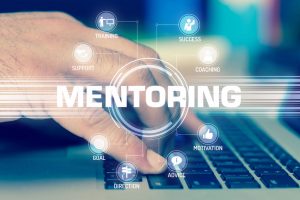How to Design and Start a Mentoring Program
 Does it feel like you’ve been hearing more and more about mentoring lately? It shouldn’t surprise you, especially as organizations of all types look to provide viable career development options for the younger workforce. There is a growing need to engage workers in meaningful collaboration and to share wisdom that only comes as the result of experience, which is where mentoring fits. With the rise in popularity of mentoring, talent professionals are being tasked with creating mentoring programs that involve more participants and align with current business needs—no small task.
Does it feel like you’ve been hearing more and more about mentoring lately? It shouldn’t surprise you, especially as organizations of all types look to provide viable career development options for the younger workforce. There is a growing need to engage workers in meaningful collaboration and to share wisdom that only comes as the result of experience, which is where mentoring fits. With the rise in popularity of mentoring, talent professionals are being tasked with creating mentoring programs that involve more participants and align with current business needs—no small task.
Twenty years ago creating a mentoring program was a much easier job to accomplish. You started with a handful of protégés (usually 10-15) recruited from the best institutions of higher education, and matched each of them up with a senior executives. The purpose to help the protégé advance was universally accepted; everyone who participated knew the importance of the process. You added a special event for orientation and light education/training for the participants, followed a year later by an elaborately catered commencement event, and voila: You had produced an effective mentoring program.
 Those days are long gone, which is not necessarily a bad thing. Many of today’s organizations want to engage a much broader potion of the workforce in mentoring, in large part because people view mentoring more and more as a critical attribute of the corporate culture, rather than as a token practice provided to just a limited few. This shift requires organizations to facilitate mentoring for the majority of workers, which can be a drastic change in how they run their mentoring programs.
Those days are long gone, which is not necessarily a bad thing. Many of today’s organizations want to engage a much broader potion of the workforce in mentoring, in large part because people view mentoring more and more as a critical attribute of the corporate culture, rather than as a token practice provided to just a limited few. This shift requires organizations to facilitate mentoring for the majority of workers, which can be a drastic change in how they run their mentoring programs.
To help enable mentoring on such a large scale, organizations should tie the practice to a variety of employee development programs that serve wide-ranging purposes. Common corporate uses of modern mentoring include:
- Career development – Gain insight and understanding into advancement opportunities within the organization or vocation.
- Skill development – Acquire complex abilities usually involving ideas, things, and/or people (e.g., sales, project management).
- Role development – Take on a set of connected behaviors, responsibilities, and norms associated with a specialized position or function (e.g., Head Nurse, Senior Business Analyst).
- Technical development – Gain the ability to accomplish duties or other specific tasks through the use of technology (e.g., computer-related skills, engineering, mathematics).
The common element in these examples is development, which for the purposes of this blog means to help someone progress from understanding something to being able to produce the intended results with confidence and accuracy.
Development does not happen by giving someone the necessary information and pointing them in the proper direction. Rather, development occurs by guiding a person’s growth through nurturing and supportive interactions that focus on personal experiences and real world circumstances. In this regard, mentoring is uniquely qualified to catalyze workforce development.
 At this point in the discussion, it is worth noting that mentoring alone is rarely employed to garner the intended results of workforce development. Instead, mentoring should be deployed along with adequate training resources, course work, certifications, and the like. Mentoring becomes the facilitative human guide that ensures that the educational efforts turn into productive results for both the organization and individuals involved.
At this point in the discussion, it is worth noting that mentoring alone is rarely employed to garner the intended results of workforce development. Instead, mentoring should be deployed along with adequate training resources, course work, certifications, and the like. Mentoring becomes the facilitative human guide that ensures that the educational efforts turn into productive results for both the organization and individuals involved.
Education without mentoring often leads to a book smart workforce that lacks street smarts. Combining mentoring alongside of education creates a sure connection between concepts and effective practices. This gets to the heart of modern mentoring: practicality and applicability. And for those organizations that create more mentoring relationships among employees, the added benefit is stronger relational bonds that contribute to increased morale and workforce engagement for all who participate.
Get more tips in our How to Design Mentoring Programs webinar recording.








